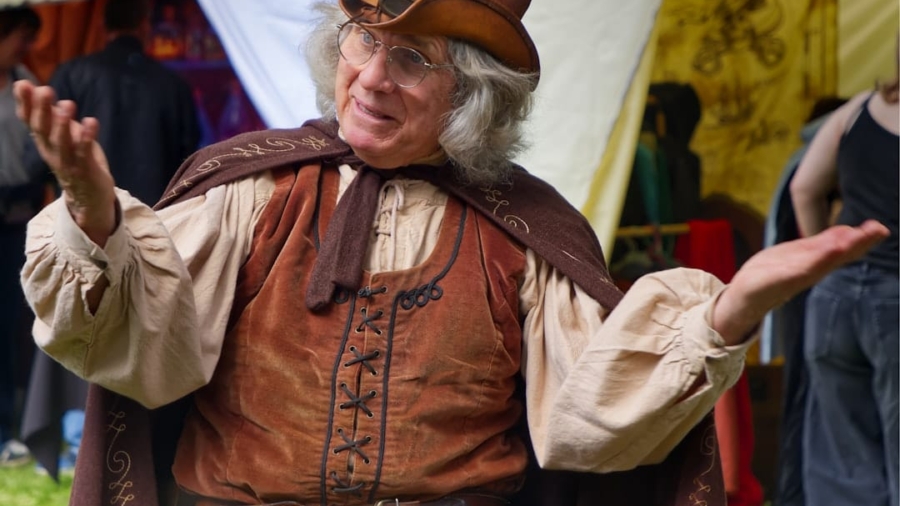Augmented Reality (AR) has emerged as a transformative technology, reshaping how we interact with historical narratives and political events. By overlaying digital information onto the physical world, AR creates immersive experiences that allow audiences to engage with history in unprecedented ways. This technology has found a unique niche in political and historical reenactments, where it serves not only as a tool for entertainment but also as a medium for education and reflection.
The integration of AR into these reenactments offers a dynamic platform for storytelling, enabling participants and viewers to experience events from multiple perspectives, thereby enriching their understanding of complex historical contexts. The application of AR in reenactments is not merely about enhancing visual appeal; it fundamentally alters the way history is perceived and understood. Traditional reenactments often rely on static displays or performances that can only convey a limited scope of information.
In contrast, AR can provide real-time data, contextual narratives, and interactive elements that engage audiences on a deeper level. For instance, during a reenactment of a significant political event, viewers equipped with AR devices can access historical documents, witness animated interpretations of events, or even interact with virtual characters representing historical figures. This multifaceted approach not only captivates audiences but also fosters a more profound connection to the past.
Key Takeaways
- AR enhances audience engagement and education in political and historical reenactments by providing immersive and interactive experiences.
- Advancements in AR technology, such as improved graphics and real-time interaction, have revolutionized the way historical events are preserved and revived.
- AR plays a crucial role in preserving and reviving historical events by bringing the past to life and making it more accessible to a wider audience.
- The ethical and cultural implications of AR in reenactments raise important questions about authenticity, representation, and the impact on historical narratives.
- Challenges and limitations of AR in political and historical reenactments include technical constraints, cost, and the potential for misinterpretation of historical events.
The Impact of AR on Audience Engagement and Education
The integration of AR into political and historical reenactments has significantly enhanced audience engagement. By transforming passive observers into active participants, AR encourages individuals to explore and interact with the content presented. For example, during a reenactment of a pivotal battle, audience members can use their smartphones or AR glasses to view 3D models of military strategies or hear firsthand accounts from soldiers who fought in the conflict.
This interactive experience not only captivates attention but also promotes critical thinking as participants analyze the decisions made during the event. Moreover, AR serves as an educational tool that caters to diverse learning styles. Visual learners benefit from the vivid imagery and animations that accompany historical narratives, while auditory learners can engage with audio clips and narrations that provide context.
Kinesthetic learners, on the other hand, can physically interact with the environment through AR applications, manipulating virtual objects or navigating through historical landscapes. This multifaceted approach to education ensures that a broader audience can connect with history in ways that resonate with their individual learning preferences.
Advancements in AR Technology for Reenactments
The rapid advancements in AR technology have played a crucial role in its application within political and historical reenactments. Innovations in hardware, such as more powerful smartphones and lightweight AR glasses, have made it easier for audiences to access immersive experiences without cumbersome equipment. Additionally, improvements in software development have led to more sophisticated AR applications that can seamlessly integrate digital content with real-world environments.
These advancements have made it possible to create highly detailed and interactive experiences that were previously unimaginable. One notable advancement is the use of geolocation technology in AR applications. By utilizing GPS data, developers can create location-based experiences that trigger specific content when users are in proximity to historical sites or landmarks.
For instance, during a reenactment at a historic battlefield, participants could point their devices at specific locations to unlock narratives about key events that occurred there. This not only enhances the educational value of the reenactment but also encourages participants to explore the physical space more thoroughly, fostering a deeper appreciation for the historical significance of the site.
AR’s Role in Preserving and Reviving Historical Events
AR plays a vital role in preserving and reviving historical events by providing new avenues for storytelling and interpretation. As traditional methods of documentation may fail to capture the full essence of an event, AR offers a platform for reconstructing lost narratives and bringing them back to life. For example, through AR applications, users can witness reconstructions of ancient civilizations or significant political gatherings that may no longer exist in their original form.
This capability not only preserves history but also allows future generations to experience it in an engaging manner. Furthermore, AR can serve as a bridge between generations by making history accessible to younger audiences who may find traditional methods less engaging. By presenting historical events through interactive experiences, AR captures the attention of digital natives who are accustomed to engaging with technology daily.
This revitalization of interest in history can lead to increased participation in cultural heritage initiatives and encourage individuals to explore their own historical roots.
The Ethical and Cultural Implications of AR in Reenactments
While the benefits of AR in political and historical reenactments are substantial, ethical and cultural implications must be considered.
Developers and historians must collaborate closely to ensure that AR content is accurate and respectful, providing context that honors the complexities of these events rather than reducing them to mere entertainment.
Additionally, cultural appropriation is a significant concern when using AR to depict historical events from diverse cultures. It is essential for creators to engage with communities whose histories are being represented, ensuring that their narratives are told authentically and respectfully. This collaborative approach not only enriches the content but also fosters a sense of ownership among communities over their own histories, promoting inclusivity and understanding.
Challenges and Limitations of AR in Political and Historical Reenactments
Technological Barriers to Access
Despite its potential, the implementation of AR in political and historical reenactments faces several challenges and limitations. One significant hurdle is the technological barrier; not all audiences have access to the necessary devices or internet connectivity required for an optimal AR experience. This disparity can lead to unequal participation in educational opportunities, particularly among marginalized communities or those in rural areas where access to technology may be limited.
Resource-Intensive Content Creation
Moreover, creating high-quality AR content requires substantial resources—both financial and human capital. Developing immersive experiences involves collaboration among historians, technologists, designers, and educators, which can be logistically challenging and costly.
Limitations for Smaller Organizations
Smaller organizations or local reenactment groups may struggle to secure funding or expertise needed to produce compelling AR content, potentially limiting their ability to engage audiences effectively.
Case Studies: Successful Implementation of AR in Reenactments
Several successful case studies illustrate the effective implementation of AR in political and historical reenactments. One notable example is the “Battle of Gettysburg” reenactment held annually in Pennsylvania. In recent years, organizers have incorporated AR applications that allow attendees to visualize troop movements on the battlefield through their devices.
Participants can access detailed maps and animations that illustrate strategies employed by both Union and Confederate forces during the battle. This innovative approach has garnered positive feedback from attendees who appreciate the enhanced understanding it provides. Another compelling case is the “AR Museum” project launched by the British Museum in London.
This initiative utilizes AR technology to bring ancient artifacts to life through interactive displays during historical reenactments. Visitors can point their devices at specific exhibits to see 3D reconstructions of how these artifacts were used in their original contexts. By merging education with entertainment, this project has successfully attracted younger audiences while fostering a deeper appreciation for cultural heritage.
The Future of AR in Political and Historical Reenactments: Opportunities and Possibilities
Looking ahead, the future of AR in political and historical reenactments holds immense potential for innovation and growth. As technology continues to evolve, we can expect even more sophisticated applications that enhance user experiences. For instance, advancements in artificial intelligence could enable personalized learning experiences where users receive tailored content based on their interests or prior knowledge about specific events.
Schools could incorporate AR experiences into their curricula, allowing students to explore historical events interactively while developing critical thinking skills. This integration could foster a new generation of informed citizens who appreciate the complexities of history and its relevance to contemporary issues.
In conclusion, as augmented reality continues to evolve, its role in political and historical reenactments will likely expand further, offering new opportunities for engagement, education, and preservation of our shared heritage. The intersection of technology and history presents exciting possibilities for how we understand our past while shaping our future narratives.
In a related article on enicomp.com, they discuss the best laptop for copywriters and finding the perfect writing companion. This article could be useful for those looking to enhance their writing skills and create compelling narratives for political and historical reenactments using AR technology. The right laptop can make a significant difference in the quality and efficiency of writing projects. Check out the article here.
FAQs
What is AR?
AR stands for Augmented Reality, which is a technology that superimposes digital information such as images, videos, or 3D models onto the real world, typically viewed through a smartphone, tablet, or AR glasses.
How is AR being used in political and historical reenactments?
AR is being used in political and historical reenactments to enhance the experience for participants and audiences. It can be used to overlay historical images, videos, or 3D models onto real-world locations, providing a more immersive and educational experience.
What are the benefits of using AR in political and historical reenactments?
Using AR in political and historical reenactments can provide a more engaging and interactive experience for participants and audiences. It can also help bring history to life by allowing people to see and interact with historical events and figures in a more tangible way.
What are some examples of AR being used in political and historical reenactments?
Some examples of AR being used in political and historical reenactments include overlaying historical photos or videos onto specific locations, creating 3D models of historical figures or events that can be viewed through AR glasses, and using AR to provide additional information or context during reenactments.
What is the future potential of AR in enhancing political and historical reenactments?
The future potential of AR in enhancing political and historical reenactments is vast. As AR technology continues to advance, we can expect to see even more immersive and interactive experiences that bring history to life in new and exciting ways.



